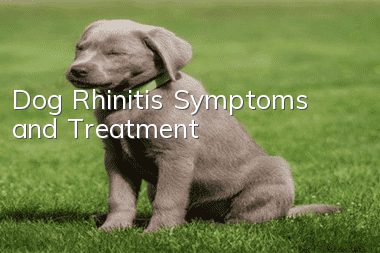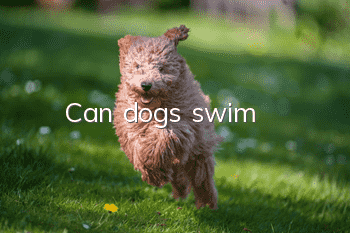Dog Rhinitis Symptoms and Treatment

Dog rhinitis is caused by foreign body irritation, trauma or secondary infection from certain diseases, causing dogs to have symptoms such as sneezing, congestion and swelling of the rhinoplasty. The disease can occur throughout the year. Next, the editor will analyze the causes of canine rhinitis for everyone.
1. Causes of rhinitis in dogs
1. In cold weather, the nasal mucosa is irritated, causing congestion and exudation, and even the bacteria remaining in the nasal cavity develop and multiply, causing mucosal inflammation.
2. Inhalation of ammonia and chlorine, smoke, dust, pollen, insects, etc. directly irritate the nasal mucosa, which will cause inflammation of the nasal mucosa.
3. Continue to develop or spread to surrounding organs.
2. Key points for diagnosing rhinitis in dogs
1. Acute rhinitis
When the disease first occurs, the nasal mucosa appears flushed and swollen, and the nasal mucosa is frequently sneezed, often shaking the head or scratching the nose with the front paws. At the same time, one or both nostrils have runny nose, which is transparent and serous at first, and then changes to The nasal mucus becomes serous, mucinous or mucopurulent, and after drying, dry scabs form around the nostrils.
When the condition worsens, the swelling of the nasal mucosa is very obvious, causing the nasal cavity to become very narrow, causing difficulty in breathing, and the sound of nasal congestion can be heard. When conjunctivitis occurs, the eyes may shed tears. When accompanied by pharyngitis, difficulty swallowing occurs, often accompanied by cough, and swollen lymph nodes in the mandible.
2. Chronic rhinitis
The onset lasts slowly, and the runny nose is sometimes more or less, often mucopurulent. If inflammation is not treated in time, it may cause bone necrosis and tissue disintegration, so the nasal mucus may be mixed with blood streaks and accompanied by a foul smell. The most common cause of suffocation or encephalopathy is chronic rhinitis, and this phenomenon must be taken seriously.
According to the symptoms of the nasal cavity, if you find flushing and swelling of the nasal mucosa, runny nose, sneezing, scratching of the nose, etc., you need to get a diagnosis immediately.
3. Prevention and treatment of rhinitis in dogs
Canine rhinitis is also closely related to air quality. In the cold winter, there are more haze days, so it is best not to take the affected dog out on foggy days. Even healthy dogs should avoid going out on haze days. . Dirty air is most likely to cause respiratory diseases and rhinitis in dogs.
To treat rhinitis, you first need to understand the cause, then put the dog in a warm place, stop training, and take appropriate rest. Usually mild acute rhinitis can be cured without taking medicine.
For severe rhinitis, choose the following medicine to rinse the dogNasal cavity: 1% saline solution, 2-3% boric acid solution, 1% sodium bicarbonate solution, 0.1% potassium permanganate solution, etc. When flushing the nasal cavity, the dog’s head must be lowered. After flushing, then Instill an anti-inflammatory agent into the nostrils.
To promote vasoconstriction and reduce sensitivity, you can use 0.1% epinephrine or phenyl salicylate (Saro) paraffin oil (1:10) dripped into the nostrils, or intranasal instillation.
- Can dogs recover from parvo on their own?
- Why is my one month old puppy vomiting?
- How to prevent poodles from catching colds
- The correct way to deal with heatstroke in dogs
- What's going on with the puppy scratching the ground?
- What should you do if your dog bites things and causes damage? Teach you how to effectively stop dogs from chewing things!
- Precautions in dog training
- How to treat glaucoma in dogs
- Can a dog poop out a plastic bag after eating it?
- Dogs cannot be bathed during these times. Do you know the 7 taboos for dog bathing?



